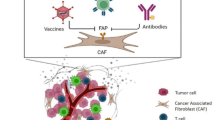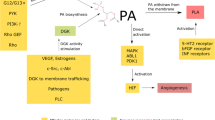Abstract
We have investigated the role of sialylation on cell-cell adhesion mediated by E-cadherin. Two MCF-7 human breast cancer cell variants were studied: MCF-7/AZ cells showed a spontaneous cell-cell adhesion in the fast and slow aggregation assay, whereas the adhesion deficient MCF-7/6 cell variant failed to form larger aggregates, suggesting that E-cadherin was not functional under the conditions of both assays. We measured the sialyltransferase activities using Galβ1-3GalNAcα-O-benzyl and Galβ1- 4GlcNAcα-O-benzyl as acceptor substrates as well as mRNA levels of four sialyltransferases, ST3Gal I, ST3Gal III, ST3Gal IV, ST6Gal I, using multiplex RT-PCR in MCF-7 cell variants. The α2-6 and α2-3 sialylation of E-cadherin was investigated by immuno-blot using Sambucus nigra agglutinin and Maackia amurensis agglutinin. Compared to the adhesion-proficient MCF-7/AZ cells, the adhesion-deficient MCF-7/6 cell line apparently lacks ST6Gal I mRNA, has a lower ST3Gal I mRNA, a lower ST3Gal I sialyltransferase activity, and no α2-3 linked sialic acid moieties on E-cadherin. The potential anti-cancer drug 1-O-octadecyl-2-O-methylglycero-3-phosphocholine (ET-18-OMe, 48 h, 25 μg/ml) belonging to the class of alkyllysophospholipids restored the E-cadherin function in the adhesion-deficient MCF-7/6 cells as evidenced by an increased aggregation. ET-18-OMe caused loss of ST6Gal I mRNA in MCF-7/AZ cells but no changes of sialyltransferase activities or sialic acid moieties on E-cadherin could be observed. We conclude that Ca2+-dependent, E-cadherin-specific homotypic adhesion of MCF-7/AZ or MCF-7/6 cells treated with ET-18-OMe was not affected by sialylation of E-cadherin.
Similar content being viewed by others
References
Mareel M, Bracke M, Van Roy F. Invasion promotor versus invasion suppressor molecules: The paradigm of E-cadherin. Mol Biol Rep 1994; 19: 45–67.
Bracke ME, Van Roy FM, Mareel MM. The E-cadherin/catenin complex in invasion and metastasis. In: Günthert IU and Birchmeier W, (eds) Attempts to understand metastasis formation, Berlin: Springer-Verlag, 1996; 132–61.
Behrens J, Vakaet L, Friis R, Winterhager E, Van Roy F, Mareel MM, Birchmeier W. Loss of epithelial morphotype and gain of invasiveness correlates with tyrosine phosphorylation of the E-cadherin/catenin complex in cells transformed with a temperature-sensitive v-src gene. J Cell Biol, 1993; 120: 757–66.
Takeichi M. Morphogenetic roles of classic cadherins. Curr Opin Cell Biol, 1994; 7: 619–27.
Vleminckx KL, Deman JJ, Bryneel EA, Vandenbossche GMR, Keirsebilck AA, Mareel MM, Van Roy FM. Enlarged cell-associated proteoglycans abolish E-cadherin functionality in invasive tumor cells. Cancer Res, 1994; 54: 873–77.
Jiang WG, Puntis MCA, Hallett MB. Molecular and cellular basis of cancer invasion and metastasis: implications for treatment. Br J Surg, 81: 1576- 90.
Shore ME, Nelson WE. Biosynthesis of the cell adhesion molecule uvomorulin (E-cadherin) in madin-darby canine kidney epithelial cells. J Biol Chem, 1991; 266: 19672–80.
Deman JJ, Van Larebeke NA, Bruyneel EA, Bracke ME, Vermeulen SJ, Vennekens KM, Mareel, MM. Removal of sialic acid from the surface of human MCF-7 mammary cancer cells abolishes E-cadherindependent cell-cell adhesion in an aggregation assay. In Vitro Cell Dev Biol-Animal, 1995; 31: 633–39.
Harduin-Lepers A, Recchi M-A, Delannoy Ph. 1994, the year of sialyltransferases. Glycobiology, 1994; 5: 741–58.
Kelm S, Schauer R. Sialic acids in molecular and cellular interactions. International Review of Cytology, New York: Academic Press, Vol. 175, 1997; 137–240.
Deman JJ, Bruyneel EA, Mareel MM. A study on the mechanism of intercellular adhesion: Effects of neuraminidase, calcium and trypsin on the aggregation of suspended HeLa cells. J Cell Biol, 1974; 60: 641–52.
Rutishauser U, Acheson A, Hall AK, Mann D, Sunshine J. The neural cell adhesion molecule (NCAM) as a regulator of cell-cell interactions. Science, 1988; 240: 53–57.
Springer TA. Adhesion receptors of the immune system. Nature, 1990; 346: 425–34.
Acheson A, Sunshine JL, Rutishauser U. NCAM polysialic acid can regulate both cell-cell and cell-substrate interactions. J Cell Biol, 1991; 114: 143–53.
Lightenberg MJL, Buijs F, Vos HL, Hilkens J. Suppression of cellular aggregation by high levels of episialin. Cancer Res, 1992; 52: 2318–24.
Fukuda M. Possible roles of tumor-associated carbohydrate antigens. Cancer Res, 1996; 56: 2237–44.
Hakomori S-I. Tumor malignancy defined by aberrant glycosylation and sphingo(lipid) metabolism. Cancer Res, 1996; 56: 5309–18.
Feizi T. Demonstration by monoclonal antibodies that carbohydrate structures of glycoproteins and glycolipipids are onco-developmental antigens. Nature, 1985; 314: 53–57.
Varki A. Biological roles of oligosaccharides: all of the theories are correct. Glycobiology, 1993; 3: 97–130.
Takano R, Muchmore E, Dennis JW. Sialylation and malignant potential in tumour cell glycosylation mutants. Glycobiology, 1994; 5: 665–74.
Li M, Vemulapalli R, Ullah A, Izu L, Duffey ME, Lance P. Down regulation of a human colonic sialyltransferase by a secondary bile acid and a phorbol ester. Am J Physiol, 1998; 274: 599–606.
Recchi M-A, Hebbar M, Hornez L, Harduin-Lepers A, Peyrat J-P, Delannoy P.Multiplex reverse transcriptase polymerase chain reaction assessment of sialyltransferases expression in human breast cancer. Cancer Res, 1998; 58: 4066–70.
Lohmeyer M, Bittman R. Antitumor ether lipids and alkylphosphocholines. Drugs Fut, 1994; 19: 1021–37.
Schallier DCC, Bruyneel EA, Storme GA, Mareel MM. Role of the host tissue in the anti-invasive activity of ET-18-OMe in vitro. Clin Expl Metastasis, 1991; 9: 579–91.
Bolscher JGM, Schallier DCC, Smets LA, van Rooy H, Collard JG, Bruyneel EA, Mareel MMK. Effect of cancer-related and druginduced alterations in surface carbohydrates on the invasive capacity of mouse and rat cells. Cancer Res, 1996; 46: 4080–86.
Bracke ME, Van Larebeke NA, Vyncke BM, Mareel MM. Retinoic acid modulates both invasion and plasma membrane ruffling of MCF7 human mammary carcinoma cells in vitro. Br J Cancer, 1991; 63: 867–72.
Simon N, Noel A, Foidart JM. Evaluation of in vitro reconstituted basement assay to assess the invasiveness of tumor cells. Invasion and Metast, 1992; 12: 156–67.
Bracke ME, Vyncke BM, Bruyneel EA, Vermeulen, SJ, De Bruyne GK, Van Larebeke NA, Vleminckx K, Van Roy FM, Mareel MM. Insuline like growth factor I activates the invasion suppressor function of E-cadherin in MCF7 human mammary carcinoma cells in vitro. Br J Cancer, 1993; 68: 282–289.
Romijn JC, Verkoelen CF, Schroeder FH. Application of the MTTassay to human prostate cancer cell lines in vitro: establishment of test conditions and assessement of hormone-stimulated growth and drug-induced cytotoxic and cytostatic effects. The Prostate, 1988; 12: 99–110.
Recchi M-A, Lepers-Harduin A, Boilly-Marer Y, Verbert A, Delannoy P. Multiplex RT-PCR method for the analysis of the expression of human sialyltransferases: application to breast cancer cells. Glycocon J, 1998; 15: 19–27.
Sambrook J, Fritsch EF, Maniatis T. Molecular cloning: a laboratory manual: Cold Spring Harbor, 1989; New York, Cold Spring Harbor Laboratory.
Glas II, Briggs RC, Hnilica LS. Use of lectins for detection of electrophoretically separated glycoproteins transferred onto nitrocellulose sheets. Anal Biochem, 1981; 115: 219–224.
Strub JM, Goumon Y, Lugardon K, Capon C, Lopez M, Moniatte M, Van Dorsselaer A, Aunis D, Metz-Boutigue MA. Antibacterial activity of glycosylated and phosphorylated chromogranin A-derived peptide 173- 194 from bovine adrenal medullary chromaffin granules. J Biol Chem, 1996; 271: 28533–40.
Laemli UK. Cleavage of structural proteins during the assembly of the head of bacteriophage T4. Nature, 1970; 227: 680–85.
Verschueren H, Van Hecke D, Hannecart-Pokorni E, Dekegel D, De Baetselier P. Dual effects of pertussis toxin on in vitro invasive behaviour of metastatic lymphoma variants. Clin Exp Metastasis, 1989; 7: 541–55.
Fridman R, Lacal JC, Reich R, Bonfil DR, Ahn CH. Differential effects of phorbol ester on the in vitro invasiveness of amlignant and non-malignant human fibroblast cells. J Cell Physiol, 1990; 142: 55–60.
Storme GA, Berdel WE, van Blitterswijk WJ, Bruyneel EA, De Bruyne GK, Mareel MM. Antiinvasive effect of racemic 1-Ooctadecyl-2-O-methylglycero-3-phosphocholine on MO4 mouse fi-brosarcoma cells in vitro. Cancer Res, 1985; 45: 351–57.
Bruyneel EA, Schallier DC, Bolscher JG, Storme GA, De Mets M, Mareel MM. Effect of racemic 1-O-octadecyl-2-O-methylglycero-3-phosphocholine on invasion in vitro and on N-linked surface glycosylation. In: Kabara JJ, (ed) The Pharmacological Effect of Lipids III, Role of Lipids in Cancer Research, The American Oil Chemists' Society, Champaign, 1989; 301–8.
Bolscher JGM, Schallier DCC, van Rooy H, Storme GA, Smets LA. Modification of cell surface carbohydrates and invasive behaviour by an alkyl lysophospholipid. Cancer Res, 1988; 48: 977–82.
Soares R, Marinho A, Schmitt F. Expression of sialyl-Tn in breast cancer. Correlation with prognostic parameters. Res Pract, 192: 1181- 86.
Author information
Authors and Affiliations
Rights and permissions
About this article
Cite this article
Steelant, W., Recchi, MA., Noë, V. et al. Sialylation of E-cadherin does not change the spontaneous or ET-18-OMe-mediated aggregation of MCF-7 human breast cancer cells. Clin Exp Metastasis 17, 245–253 (1999). https://doi.org/10.1023/A:1006639804430
Issue Date:
DOI: https://doi.org/10.1023/A:1006639804430




